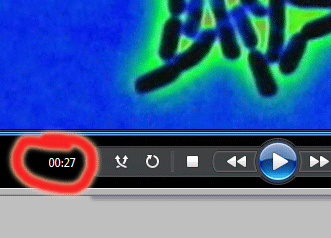Preparation exercises on exponential growth
Create spreadsheets for the following situations. Bring the spreadsheet (on your iPad or on a laptop) to class on Monday.
Savings account
What does it mean when a savings account offers you a 5% APY rate (APY=annual percentage rate)? It means that if you start the year with \$100 on account, by the end of the year, you will have 5% (\$5) more. If you start the year with \$105 at the end of the year you will have 5% (0.05*105=\$5.25) more. If you start the year with \$110.25, by the end of the year you'll have 5% (0.05*110.25=\$5.51) more, etc.
| Year | Balance |
|---|---|
| 0 | \$100.00 |
| 1 | \$105.00 |
| 2 | \$110.25 |
| 3 | \$115.76 |
There's a simpler way to generate the numbers in this table: Just multiply the balance of the previous year by 1.05=1+[percentage expressed as a decimal] to get the next year's balance.
Now imagine that you have money in two banks:
- \$1000 in year 0 at Bank L that pays 5%, and
- \$500 in year 0 at Bank H that pays 10% APY.
Let's see what happens over 30 years if you don't make deposits or withdrawals:
- Create a spreadsheet with three columns: 1) Time (in years) 2) Bank L balance 3) Bank H balance
- Calculate the balance each year (use a formula to make it easier...)
- Make a graph or "chart" showing the balances of *both* accounts vs time in your spreadsheet.
- About how many years does it take for the money in each account to double from its initial balance to twice its initial balance?
- About how many years does it take for the money in each account to double from \$1500 to \$3000?
Boring, but steady income
Now imagine a household which has a non-interest-bearing checking account. Every year...
- The household earns \$20,000
- And pays bills of $19,500
Make another column in the spreadsheet you made above, showing how much money (starting from \$500 in year 0) is in this household's checking account at the end of each year. Again, you can use a formula to fill the table out quickly. The formula should be pretty simple!
Bacteria
Click on this link to download "ecoli.wmv". When you double-click on the downloaded file (at least on the lab computers), the Windows Media Player pops up to show the movie. (It may take a minute to download--shorter on-campus). It displays how far you are in to the movie in seconds as shown below:

It's a time lapse movie focussing on what starts out as a few E. Coli bacteria as they reproduce in a petri dish full of nutrients. Each pill-like cylinder is one bacterium.
Make a new table with two columns: time (in seconds) and number of bacteria. You'll need to count the bacteria, and sometimes it's not obvious when one cylinder has split into two separate ones. Just take your best guess!
- Stop movie at 5 seconds in. This will be your first count. Count bacteria.
- Allow the movie to run for 2 seconds: stop it at 7 sec. Count bacteria.
- Keep stopping every 2 seconds to count bacteria,
- up until about 25 seconds. (Ignore the bacteria that come into the frame from other colonies).
Eventually we will... right click on axis and select "Format axis | Axis options | Log scale".